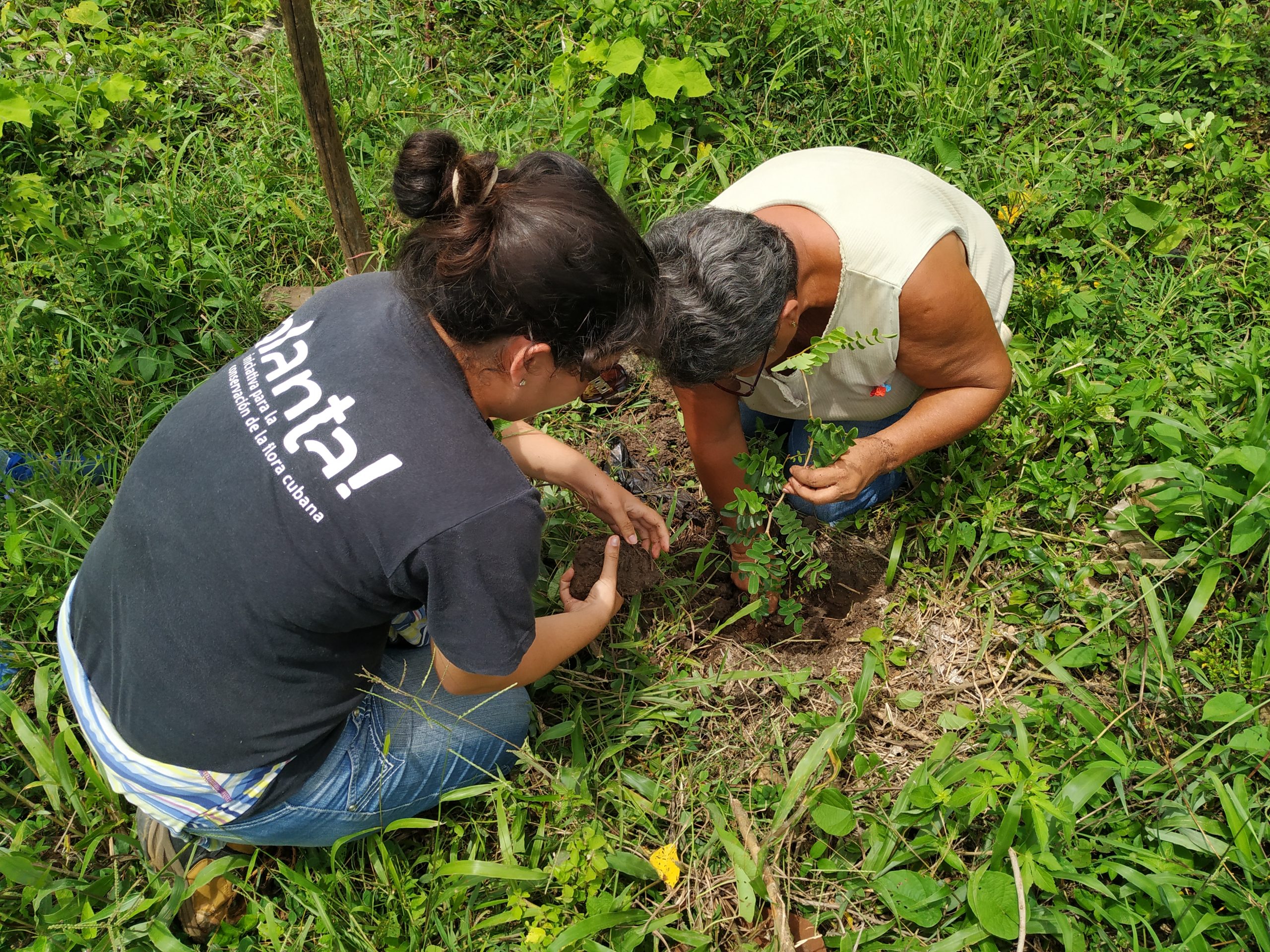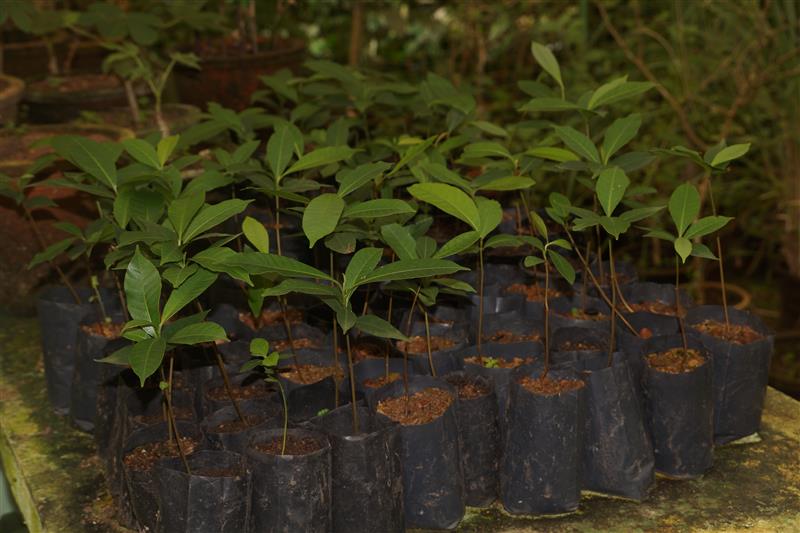The Global Tree Assessment - Understanding Tree Status Worldwide and Inspiring Conservation Action
-
Region
Global -
Programme
BGCI -
Workstream
Saving Plants -
Topic
Tree Conservation -
Type
Press Release -
Source
BGCI
News Published 28 October 2024
The Global Tree Assessment is the largest global assessment project carried out to date, with trees now accounting for over a quarter of species on the IUCN Red List. Over 80% of trees (>47,000 species) have been evaluated, and therefore trees can now be considered “comprehensively assessed”, along with previous well known animal groups such as birds, mammals, amphibians, sharks and reptiles.
“The Global Tree Assessment presents the first global picture of the conservation status of trees, which enables us to make better informed conservation decisions and take action to protect trees where it is urgently needed.” said Dr Malin Rivers, Global Tree Assessment lead at Botanic Gardens Conservation International, “The work is a global effort, with over 1,000 tree experts involved. We need to continue to collaborate to scale up local, national and international tree conservation action to support people and the planet.”
The results show that over one third of tree species are threatened with extinction, with threatened trees found in 192 countries worldwide. The highest proportion of threatened trees is found on islands. Island trees are at particularly high risk from urban development, tourism, agriculture, invasive species, pests and diseases. Climate change is also increasingly threatening island trees, especially in the tropics, through sea-level rise and stronger, more frequent storms.
The Global Tree Assessment provides information on the threats to trees, but more importantly it provides the data needed to take effective conservation action.

For example, in Puerto Rico, fieldwork to identify, propagate and protect species, has shed light on the precarious status of Ravenia urbani, a Vulnerable species with fewer than 1,000 trees in the wild. Conservation actions are ongoing to improve the conservation status of this endemic species.
“The Red List of Colombian trees has promoted a comprehensive conservation plan for all threatened species and has helped bring attention to several Critically Endangered trees. In addition, this initiative has been the largest Red List project carried out in the country and has provided invaluable tools and expertise to continue with assessments for many other plants” says Cristina Lopez-Gallego, Co-Chair of the IUCN-SSC Colombian Plant Specialist Group.
Colombia, one of the countries with the highest tree diversity on earth, have used the information from the Global Tree Assessment to inform national conservation action and planning. To date seven species of Critically Endangered or Endangered Magnolia species (Magnolia guatapensis, Magnolia polyhypsophylla, Magnolia gilbertoi, Magnolia hernandezii, Magnolia henaoi, Magnolia lenticellata, Magnolia virolinensis) have been included in the designation of five different Key Biodiversity Areas.

Buchanania barberi, a small tree endemic to the South Western Ghats of Kerala, India, was classified as Critically Endangered on the IUCN Red List in 2018, prompting urgent conservation efforts. Germination experiments showed a high seed viability, and seedlings demonstrated promising growth in nurseries. Currently, the species is successfully conserved at the Jawaharlal Nehru Tropical Botanic Garden and Research Institute, and a conservation awareness program has educated many people on the importance of protecting threatened plants.
“The assessment of all tree species has been a massive undertaking over many years that needs to be celebrated”, says Jean-Christophe Vié, Director General of Fondation Franklinia the principal funder of the Global Tree Assessment. “It is still ongoing, but we now know where to act to tackle the extinction crisis hitting the world’s trees. There is no more excuse not to act. With such a large number of threatened tree species the task is huge, but it has already begun. Countries such as Ghana, Colombia, Chile, and Kenya already have national strategies in place. Others like Gabon have identified important areas for trees.”
In Ghana, a programme led by Ghana Wildlife Society to restore two sections of forest in the Yongwa and Sapawsu Forest Reserves began in 2018 with two main aims: to increase the population of Critically Endangered Talbotiella gentii, which is used for timber, fuel wood and medicine as well as protecting water sources, and to raise awareness among the communities about the importance of this tree. The species is now part of the country’s tree conservation planning work, with a national conservation strategy for Ghana’s threatened trees published in 2023.
The loss of trees has wider implications for people and the ecosystem services that trees provide. In addition, deforestation is a major threat to many of the world’s threatened terrestrial animals, fungi and other plants.
“Trees are a valuable resource that deserve our respect and stewardship.” says Damian Wrigley, Manager of Living Collections and Conservation, at Botanic Gardens of Sydney and Oceania Representative and Vice Chair of the CITES Plants Committee. “By managing populations at the local, national and global levels we can more effectively support ecosystem services. We can also underpin sustainable use through international trade, ensuring a better and healthier future for the entire planet.”
The Global Tree Assessment team would like to thank Fondation Franklinia for funding the project and all assessors, contributors, and members of the IUCN SSC Global Tree Specialist Group for their continued work.

Become a Member
Be part of the largest network of botanic gardens and plant conservation experts in the world by joining BGCI today!
Support BGCI
You can support our plant conservation efforts by sponsoring membership for small botanic gardens, contributing to the Global Botanic Garden Fund, and more!